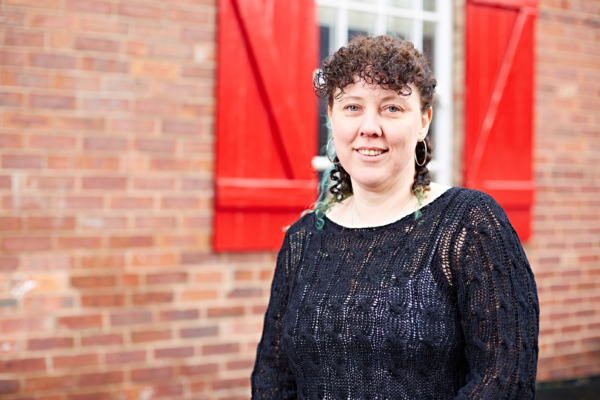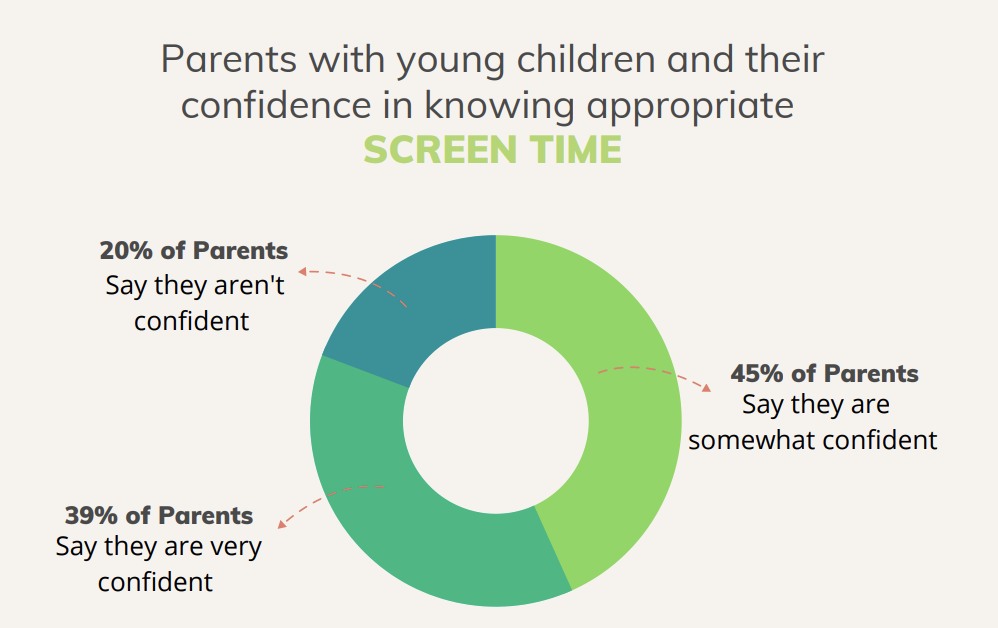Should Parents Be Worried About Their Child's Technology Use?
By Gigi Pennoyer
In 2007 when the first iPad was released, our world took a big step toward becoming a digital one. Most people spend multiple hours per day on devices, whether that be an iPad, iPhone, or laptop. For some, the transition to a digital world was tough, and for others it started so early that they haven’t known life without technology. There are endless studies and reports on the positive and negative effects of technology and social media on the general population. But what is less talked about is the effects on young children growing up in a world consumed by technology.
In a study conducted by Pew Research Center in 2018, about a third of respondents “predicted that harms [of technology] to well-being will outweigh the positives overall in the next decade.” The Social Dilemma, a documentary released in 2020 started a big conversion about the negative impacts of social networking, and frankly scared a lot of people. But again, it was missing one big thing: How does technology affect children who are using it from the age of four or five and will never know a world without it? How much technology should parents let their children be exposed to?
Technology encompasses many things. It includes the internet, watching tv (on devices), social media, apps/games, and more. It is somewhat hard to make a distinction between which specific activities on devices have the biggest downsides. Mother of two children ages two and three, Kate Greathead, explained to me that the only technology her children are exposed to is watching tv. Still, she notices negative side effects.
“We don’t have Alexa, we don’t have iPads, and that’s a conscious choice. We really try to live like it’s the olden days here.”
Kate Greathead, Mother and Author
According to Common Sense Media, ninety-five percent of families with children age 0 to 8 now have a smartphone. When Googling “effects of technology on children,” there are many results which include both actual research on the topic as well as blog posts which discuss the perceived effects. However, there is not a wealth of hard research available. According to Michael Robb, director of research at Common Sense Media, “The truth is, technology is changing and evolving at a rapid pace, and research simply isn’t keeping up.” But it is also too early for us to know the long-term effects of technology use among children.
“I worry about technology. Joey, my youngest, knew how to control an iPad at three years old, which is scary.”
Nathalie Schubert, Mother of Three Children Ages Four, Seven, and Nine
One effect found in many reports, whether research or blogs, is the lack of exercise that can occur alongside excessive technology use. Children spend less time outside moving around when they are sitting around on their devices. Another possibility, according to National University, is that “children and adolescents may engage in more mindless eating while watching TV or playing video games.” According to a study conducted by The American Academy of Pediatrics, “Current evidence suggests that screen media exposure leads to obesity in children and adolescents through increased eating while viewing; exposure to high-calorie, low-nutrient food and beverage marketing that influences children’s preferences, purchase requests, consumption habits; and reduced sleep duration.”
Children regularly using technology are also more likely to report mental health issues, according to research published by the Association for Psychological Science. As most people who use technology experience, social media can cause people to compare themselves to others, as well as feel left out or lonely.
Attention span is another thing that can be negatively affected by technology. “When I sit them down in front of something, their attention spans are terrible. Five minutes into the TV show they’ll want something else. So, I feel like the infinite number of choices, on top of the screen time alone, is really bad for kids’ attention spans,” said Kate Greathead, mother of two children, ages two and three.
Catherine Knibbs, a child trauma psychotherapist who specializes in the online harms posed to children in a world of technology, doesn’t think the picture is as bleak as some people believe. “The difficulty is what children can be exposed to in terms of harms, so the technology is not the demon,” said Knibbs. “I tend to use a metaphor of a city park. When children go into a city park, we don’t allow them to climb climbing frames until they are confident enough with their motor skills. We don’t allow them to walk off through the park with another child until we know they have enough training and education around what to look for and what to be aware of. And so, the same metaphor goes for the online space.”
“The picture is not as bleak as it’s often made out”
Catherine Knibbs, Child Trauma Psychotherapist

Our world is completely consumed by technology, and it’s not all bad. Zoom, in particular, has allowed us to connect with people far and wide. I was in Los Angeles when I connected with Knibbs in England via Zoom: “… the tool allows you to do that, and then there is this thing about ‘we’ve got’ a relationship. You are talking to me, I am talking to you, it’s what we would be doing if we were sitting in a cafe in person,” Knibbs said.
Since COVID cases have gone down and school has been back in person, teachers are seeking “to broaden their use of education technology,” according to Education Week. Technology is also playing a much bigger role in home life. Schools all over the world are using technology in and out of the classrooms, giving children access to all kinds of learning platforms. “Overall, I think it has built the kids’ technological literacy. I think it’s built how people view what early childhood programming exists in technology,” said Katie Pozerski, an early childhood educator in New York.

Photo Credit: Katie Pozerski
Children do gain a lot from technology if they are using it in the right ways. One benefit is research and critical thinking. Technology allows children to gain a wealth of information as well as learn how to look through research and find reliable information. Also according to the University of Rhode Island, technology “accelerates and enriches basic skills. Students who have access to technology become more quickly engrossed in the material, and as such are able to absorb the information more quickly.” Technology also helps students stay in contact with peers and family. Children can bond with peers as well as stay in touch with family and friends who live far away.
Schubert’s two oldest children, Jack and Liv who attend public school in Connecticut, are sent home from school with iPads every Wednesday. They use a reading platform on the devices where they have access to endless books. “My daughter Liv, she loves epic, which is reading books, she knows how to research things. She loves it. She doesn’t abuse it with games, she really does it to learn,” said Schubert. “For instance she’s obsessed with Australia right now, so she likes to look up things about it. That’s a good thing in my mind.”

Photo Credit: Nathalie Schubert
Knibb’s biggest concern about technology is harms that children can be exposed to. Knibbs defines harms as “the harms that come from technology- facilitated environments that create a feeling of trauma.” This includes any number of things such as cyberbullying, child sexual abuse, pornography, or access to gambling.
Schubert shared a story with me that could be considered a trauma. Last Fourth of July, Schubert noticed hundreds of Apple charges on her credit card, and her card was over its limit. She reached out to Bank of America and reported that someone had hacked her credit card, because she did not recognize any of them. She then found out that the charges were connected to her oldest son, Jack’s iPad. Jack was eight years old at the time.
“Jack’s iPad was connected to my phone and iPad and I didn’t have any parental controls. He thought he was winning things. This one thing that was $99.99, so it was $106 because of taxes, and it was charged over and over and over again. Hundreds of charges. I asked Jack, are you playing these games? And he said he thought he was winning money,” Schubert explained.
“Somehow it tricked him into buying things and he didn’t realize what he was doing,” she added. “We got our money back because he was being tricked in a way with this third party game. Apple and the bank understood it and apparently this happens all the time.”
But the issue did not resolve overnight. For three months, there was money going back and forth and the app store would constantly become locked because of what happened.
“I would get frustrated and have to call to get it unlocked and Jack kept seeing this. He learned such a good lesson. Jack was very aware and I told him everything that happened,” she said. She said that it was traumatic for him, and it took up a significant amount of his mother’s time for over three months, as well as the fact that there were thousands and thousands of dollars on the line.
So, how should parents address their child’s relationship with technology? Knibbs explained that one important thing for parents to be aware of is how much time they spend on technology themselves. Children pick up on their parent’s relationship with technology and how much time they spend on it.

“Educating parents that when you’ve got a baby and you’re not looking at your baby because you’re looking at your screen, that baby will start to develop a different kind of attachment with the parent,” Knibbs said. “Some children become distanced from their parents because parents are on their phone. But being a new parent is terrifying; parents are looking for reassurance on their phones at the detriment of their children. How we interact with technology is a model for what our children learn.”
Another tip from Knibbs for parents is to take the time to learn and understand what their child is doing on technology. Knibbs recommends that parents sit down with their child and watch what they are doing. “Parents are making assumptions without understanding it, so for me that’s how a parent helps a child have a healthy development and relationship with whatever they are doing, they have to learn about it,” she said.
While there is no “right” way for parents to address their child’s relationship with technology, there are plenty of tips out there. A New York Times article notes establishing a balance between screen time and getting outside and interacting with peers is important. Through my research and interviews, it seems that awareness is key for parents: being aware of how much time children are spending on technology, what it is they are doing on devices, and any noticeable ways they are being affected.
Another tip Kate Greathead had is to create boundaries – have certain rules and stick to them. No one knows the exact long term effects of children growing up with technology and there is no perfect way to parent in a digital world but it is important for parents to at least be aware.
For parents looking for more information and tips,